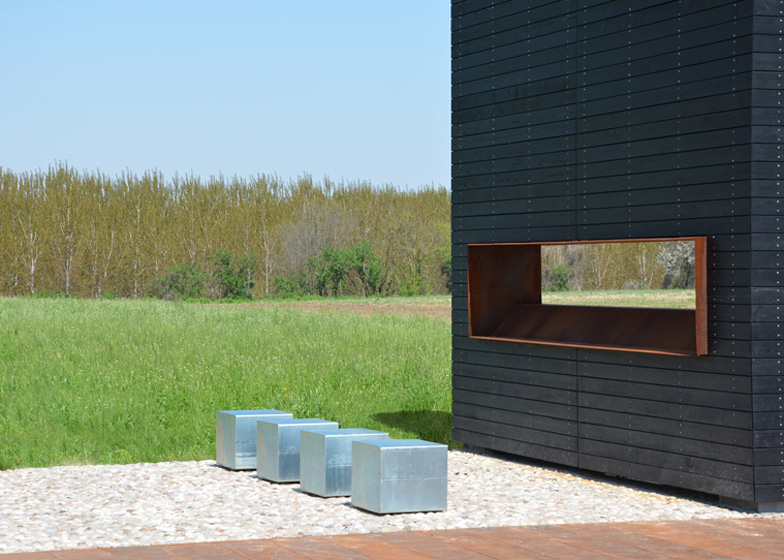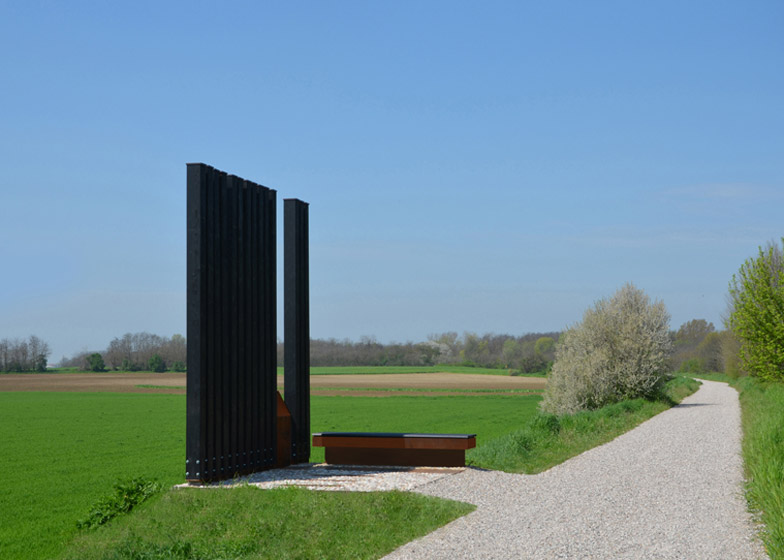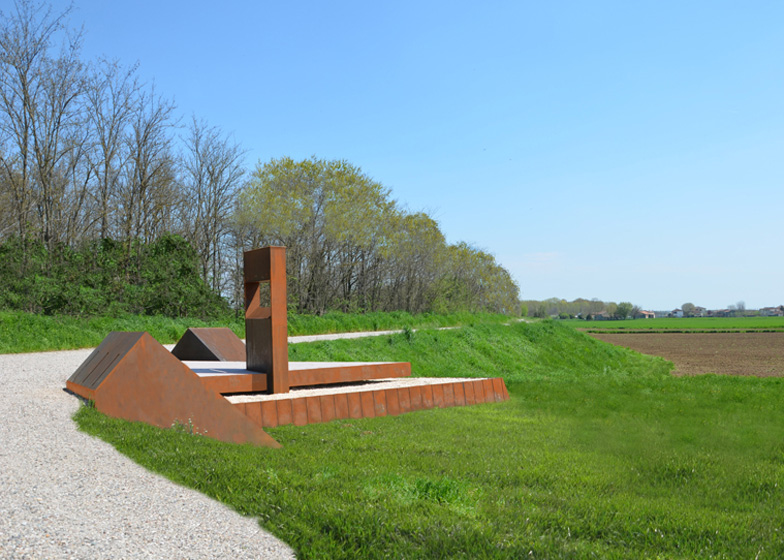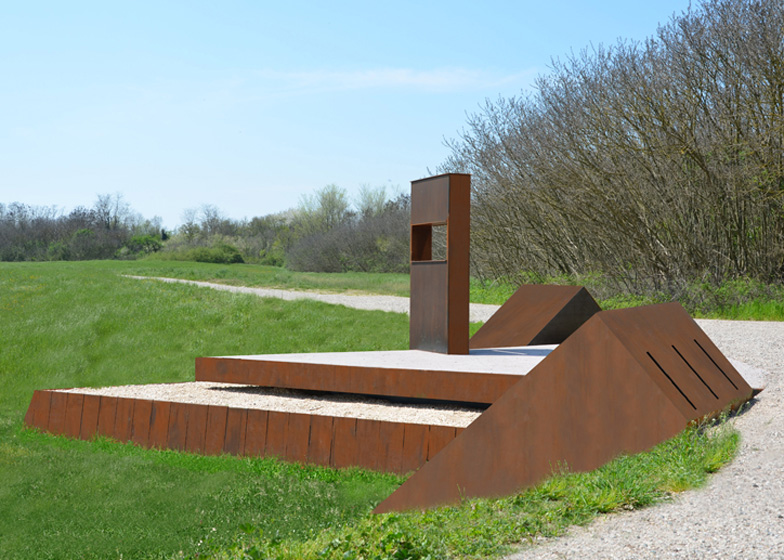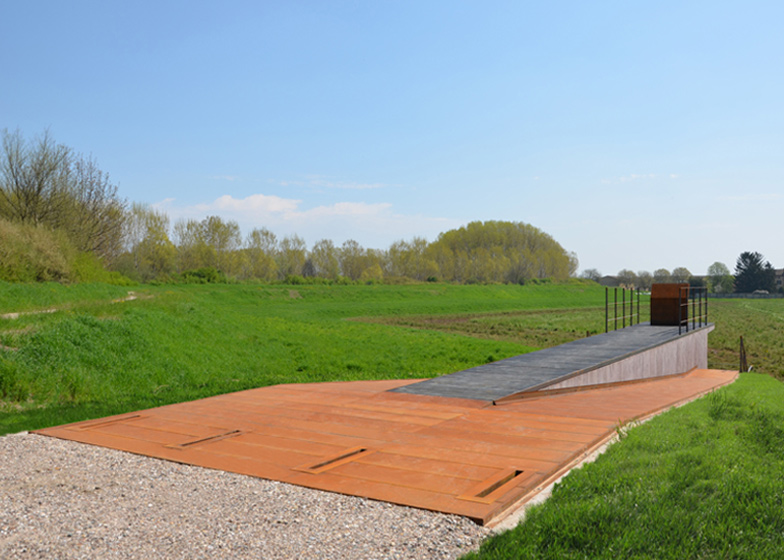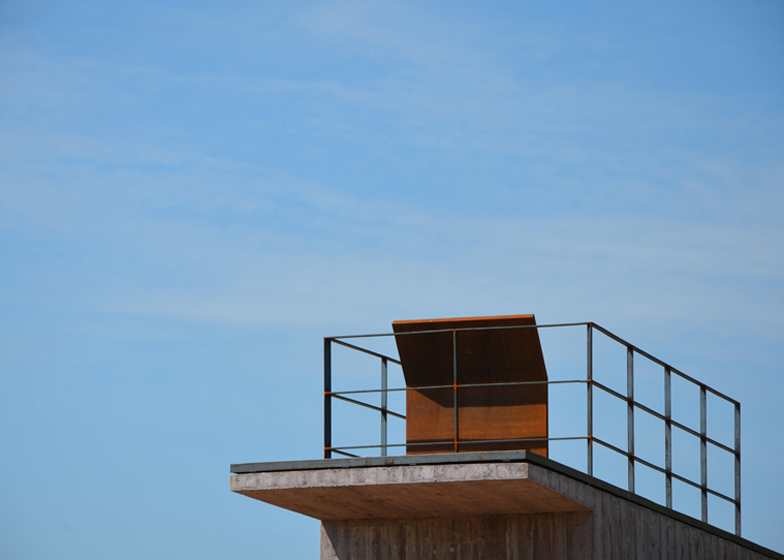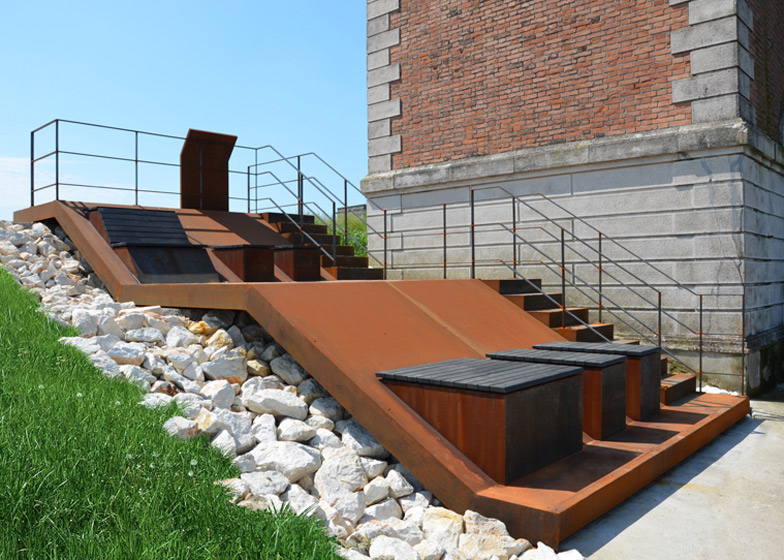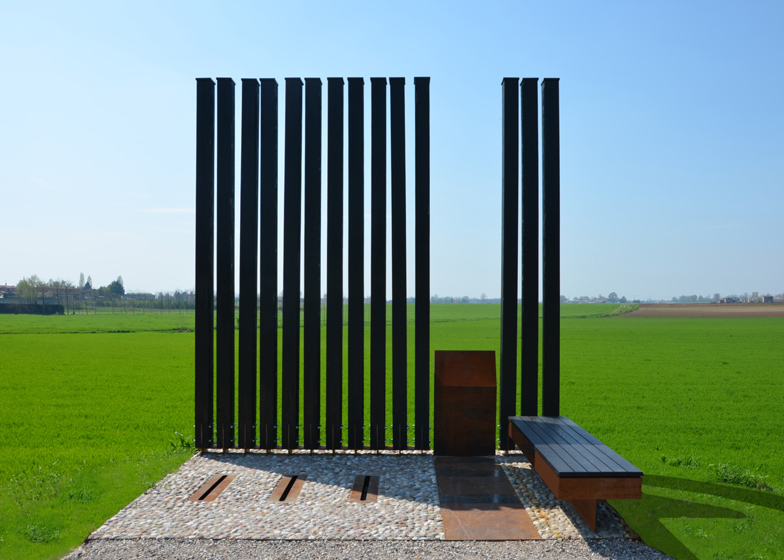Italian design studio Archiplan has installed a series of Corten steel, wood and concrete rest areas and information points along the banks of a river in Italy to enhance views of the surrounding countryside (+ slideshow).
Situated in a wetland area created by the lower course of the river Mincio, the project was commissioned by the City of Virgilio to improve visitors' experience of an area famous for being the birthplace of the ancient Roman poet, Virgil.
The forms of the installations respond to significant cultural and historical landmarks along the four kilometre route, including a Napoleonic fort and the site of an old postal road.
Archiplan designers Diego Cisi and Stefano Gorni Silvestrini told Dezeen that the palette of materials was chosen to "fit the shades of the landscape."
Stepped seating next to a twentieth century pumping station provides a resting place that "celebrates man's attempt to govern the natural element of water."
An aperture in a wood-panelled wall looks out on the start of the ancient postal path.
Seating areas and landmarks made from Corten steel and stone were recently added to the route of a coastal path in Spain, while Budapest architects MARP replaced the corner of a ruined Renaissance palace with a Corten steel lookout point – see all of our stories about landscape architecture.
Photography is by Martina Mambrin.
Here's some more information from the designers:
Cultural landscape path in the lower Mincio
The work is defined by a series of lightweight structures that accompany the users of the area placed in the Regional Park of the Mincio in a process of interpretation of historical and cultural environment, capable of enhancing aspects of excellence in the area of the lower course of the river. The proposal involves the construction of a series of installations to define some interpretation centers where the cultutral attraction is the figure of the Roman poet Virgil and the integration of his poetry with the river landscape.
The rest areas are configured as local landmarks that mark and measure the pedestrian path that runs along the bank of the river.
The "door courier" is placed in correspondence of an ancient post road, and emphasizes its geographical position. The "gate of the fort" is configured as formal reference marking the presence of the nearby fort of Pietole from which it draws the figures of bastions. The "gateway to the Eclogues" point metaphorically the landscape fragment described by the poet Virgil in his poems. The “door of the Georgics” placed at the same Virgilian ancient court, represents the balance between nature and man's work sung by Virgil in his opera. The "door of Travata" located in a pumping station of the twentieth century celebrates man's attempt to govern the natural element of water.


